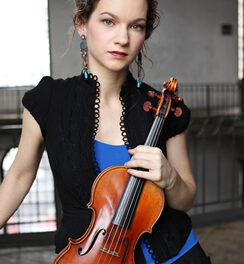As a part of North Carolina State University’s yearlong emphasis on Haiti, the organization Hearts with Haiti presented the Resurrection Dance Theater from St. Joseph’s Home for Boys. Under the direction of Michael Geilenfeld, these remarkable young men, former street children, child slaves, and orphans, tell their stories through song, drums, and dance, raising money to support the ministry of St. Joseph Family in Haiti and to rebuild their home in Port-au-Prince. The troop combines irrepressible enthusiasm with technical prowess and a buoyant, catching optimism.
After a rather extensive introduction, Walnes, Eddy, and Gerald performed an interpretation of “A Change in My Life.” Their dancing was fluid and highly interpretive, showing influences of modern, classical ballet, and jazz, but was not precisely what most of the audience had been expecting. The real excitement began, however, with “SHINE,” an interactive narrative of a young shoe-shiner. Three of the ensembles’ drummers, Tiboudo, Lele, and Bill, exploded onto the scene with rousing, virtuosic rhythm. The rest of the group created a typical Haitian street scene and told the story of a wealthy businessman, a young shoe-shiner, and a policeman. The dashing, purple-suited businessman had his shoes shined, but refused to pay. When the shoe-shiner stole his hat in revenge, Mr. Purple Suit went for reinforcements. Excitement reached its highest pitch when Didi, the shoe-shiner, dashed into the audience, trying to escape the policeman. A young woman — who had unwisely chosen an aisle seat — was coaxed onstage to provide a spirited witness in the boy’s defense, aided by the vociferous crowd. Reparations were made, to the chant of “Pay him! Pay him!”
The next number was an extraordinary drum piece. Bill and Lele starred on two djembes, but the entire ensemble’s performance was impressive. Bill’s career, which began with a six-year-old child slave pounding on an upside-down bucket, has launched him to worldwide fame. He has studied in Africa, participated in international conferences, and performed and traveled extensively. When you listen to him play, you can tell. His story, his virtuosity, and his charisma are equally compelling.
Didi, the youngest member of the troop and a clear crowd favorite, performed a hysterically funny and impressively true-to-life Michael Jackson imitation to “Beat It.” If the ten-year-old can polish up his moonwalk, we may have an upcoming heir to the Jackson legacy.
The other group dances, “Farm Dance,” “Shango,” “Freedom Reclaimed,” and the finale, were dominated by the compelling power of narrative. Even through these young men are gifted, their abilities never overshadowed the overall story. Reginald, who only has one arm, held his own with some fancy footwork. Walnes’ athletic jumps were spectacular. Jackie, Eddy, and Gerald especially are gifted dancers, and the support of the full drumming section — Bill, Lele, Tiboudo, and Roland — was exceptional. The entire group shows an unusually high ability to connect with the audience.
Even so, the talent of this ensemble is not their primary focus. They are, as indicated in the program, “the very best of servant-leaders.” The Resurrection Dance Theater is here to tell their story and to help children who are in the same situations that the members once were.
For those interested in more information or making a donation, please visit http://www.heartswithhaiti.org.











